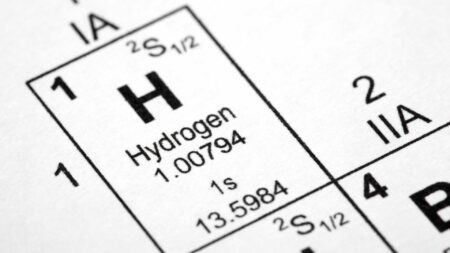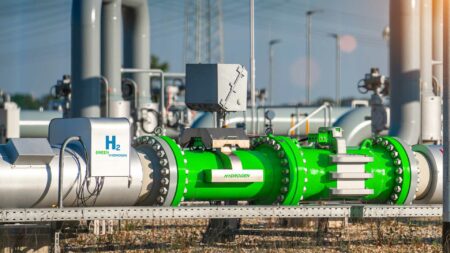For Europe, the race to secure a prominent position in the green hydrogen landscape is nothing short of a strategic imperative.
However, despite grand announcements and ambitious targets, the continent faces a harsh reality: even if every planned renewable hydrogen project comes to fruition, Europe may fall short of its 2030 production goals. This warning was sounded by Thomas Schlaak, the global head of the Energy, Public Services, and Renewable Energy sector at Deloitte.
Schlaak’s cautionary message was delivered during the 14th edition of the Energy Prospectives conference cycle, a forum organized by Fundación Naturgy and the IESE Business School. His remarks shed light on a critical issue that could impede Europe’s green hydrogen ambitions.
As of Schlaak’s analysis, which considered the European projects announced until the summer, a substantial gap persists. If every project progresses as planned, “at least one million tons of hydrogen would be missing” to meet the objectives set forth in the RepowerEU Plan.
Schlaak’s assessment highlights an issue that extends beyond mere numbers. The risk looms large that green hydrogen production could migrate to more favorable regions, notably the United States. Incentives such as the Inflation Reduction Act (IRA) in the U.S. make it a compelling destination for hydrogen production, with a potential adverse impact on European efforts.
Carlos Pascual, the senior vice president of Global Energy and International Affairs at S&P Global Commodity Insights, further emphasized this point. He noted that the United States has been actively promoting its own green hydrogen initiatives under the IRA, creating an environment conducive to industry development. Europe, in turn, needs to ensure that its own instruments, including the European Hydrogen Bank and individual member state programs, succeed.
Access to sufficient renewable electricity generation at competitive prices is another pivotal aspect of the green hydrogen equation. Carlos Pascual outlined the significance of bridging the energy price gap between Europe and the U.S. in the coming years. Without this balance, Europe risks losing its competitive edge in the global green hydrogen race.
The global energy landscape is undergoing a rapid and multifaceted transformation. Pascual aptly described it as “an unprecedented challenge, a technological, commercial, and political transition in a period of time that will be very short, until 2050.”
This transformation necessitates two parallel transitions. Firstly, there is the task of maintaining the existing energy economy while reducing demand and decarbonizing supply. This is critical to ensure political support for the broader energy transition.
Simultaneously, the energy economy of the future must be constructed, featuring elements like solar, wind, hydrogen, and carbon capture. Balancing investments in these two concurrent transitions presents a formidable challenge.
However, this challenge is further compounded by the complex geopolitical landscape. Diplomatic uncertainty in Ukraine, deteriorating U.S.-China relations, and regional tensions in the Middle East add layers of complexity to an already intricate situation.
The world faces a landscape marked by geopolitical volatility, where developed and developing nations alike contend with issues of shared importance. Internal polarization in the United States serves as a testament to the multifaceted nature of the challenges ahead.
As Europe strives to establish itself as a green hydrogen leader, the road ahead is rife with uncertainties. Meeting green hydrogen production goals by 2030 requires a concerted effort, one that goes beyond ambitious announcements to tackle the intricate web of technological, financial, and geopolitical challenges. The world’s pursuit of sustainable energy hinges on how Europe navigates this formidable divide.








